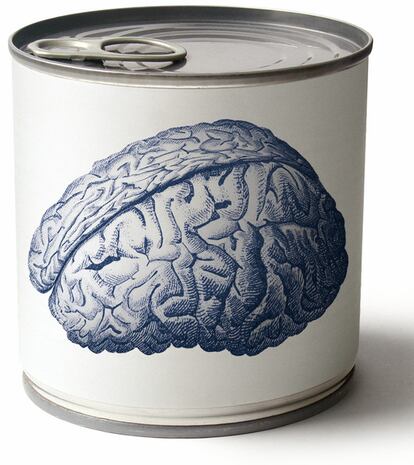Brain tropism: traffic signals inside the brain

One-way lanes are a common device to manage traffic particularly in congested cities where roads are often narrow: a smoother movement is ensured by allowing cars to move only in one direction. The body too has many one-way lanes for body fluids. The direction is maintained by cilia: fine, hair-like structures that line the many tube-like passages within the body. The cilia keep beating gently and repeatedly only in one direction, moving the traffic along smoothly. Ciliary cells cover the internal surfaces of Fallopian tubes, which guide a fertilized egg to the uterus; cilia that line the respiratory tract remove mucus; and those that line cerebral cavities (ventricles) direct the flow of cerebrospinal fluid. If traffic along such roads goes haywire, the consequences are serious: faulty embryonic development, ectopic pregnancies, pulmonary diseases (bronchiectasis), and hydrocephalus (accumulation of excess fluid inside the brain) to name a few.
If traffic along such roads goes haywire, the consequences are serious: faulty embryonic development, ectopic pregnancies, pulmonary diseases (bronchiectasis), and hydrocephalus (accumulation of excess fluid inside the brain) to name a few
We chose mouse brain as the experimental model because the mouse is commonly used to study mammalian physiology
We have identified some molecular cues involved in such regulatory processes. One of these molecules is a protein localized towards the rear of the cell membrane
But how do cilia know the direction in which they must beat? We know that this orientation is set during development, but we don't know how - and our research over the past three years has focused on finding out.
We chose mouse brain as the experimental model because the mouse is commonly used to study mammalian physiology. Our team included both biologists and physicists, and we developed an experimental set-up that allowed us to mimic the development of ciliated cells as well as the physiological flow they are subjected to. Our research shows, for the first time, that cilia of developing brain cells can read - and respond to - a physical signal: the signal given by the fluid as it flows past the cilia. Indeed, a bit like the weathervane that keeps turning to show the prevailing direction of the wind, cilia begin to beat in unison to match the direction of the current; they are thus oriented automatically by hydrodynamic forces created by the cerebrospinal fluid as it flows from the point at which it is produced (one end of the ventricles) to the point from which it is removed (the other end of the ventricles). We also found that this ability to detect and then assume the direction of the flow is transitory: it lasts only until the cells mature; like the proverbial old dog, old cells cannot learn new tricks. To sum up, as cilia grow along the cell surface and start beating inside a given ventricular canal, they are sensitive to the direction of the current and progressively adopt that direction. After a couple of days, the process is complete and the direction is permanently "locked"?like region-sensitive DVD players. All ciliated cells covering the ventricles then beat together to facilitate the flow of cerebrospinal fluid along ventricular walls. We have identified some molecular cues involved in such regulatory processes. One of these molecules is a protein localized towards the rear of the cell membrane. When stained with a fluorescent dye, the protein becomes visible as a pattern of densely scattered dots, a Van Gogh in miniature?which is why the protein was named Van Gogh-like 2.
As the sun moves across the sky during the day, sunflowers follow that movement and always face the sun, a well-known example of 'tropism', which is the term used for describing such regular, instinctive movements. Our experiments show that tropism also exists in the mammalian brain, exhibited by shaping of the movement of cilia by hydrodynamic forces and biochemical signals. This mechanism is particularly valuable because, by combining a physical process with a molecular process, it shows how ciliary movement can be controlled over the entire surface of a network. This understanding opens the way to deal with ciliary dysfunctions that lead to "ciliary" diseases and is likely to be useful in studying similar physiological flows at other sites, for example the cardiovascular system and the respiratory system.
Nathalie Spassky, Ecole Normale Superieure. -www.atomiumculture.eu
Tu suscripci¨®n se est¨¢ usando en otro dispositivo
?Quieres a?adir otro usuario a tu suscripci¨®n?
Si contin¨²as leyendo en este dispositivo, no se podr¨¢ leer en el otro.
FlechaTu suscripci¨®n se est¨¢ usando en otro dispositivo y solo puedes acceder a EL PA?S desde un dispositivo a la vez.
Si quieres compartir tu cuenta, cambia tu suscripci¨®n a la modalidad Premium, as¨ª podr¨¢s a?adir otro usuario. Cada uno acceder¨¢ con su propia cuenta de email, lo que os permitir¨¢ personalizar vuestra experiencia en EL PA?S.
?Tienes una suscripci¨®n de empresa? Accede aqu¨ª para contratar m¨¢s cuentas.
En el caso de no saber qui¨¦n est¨¢ usando tu cuenta, te recomendamos cambiar tu contrase?a aqu¨ª.
Si decides continuar compartiendo tu cuenta, este mensaje se mostrar¨¢ en tu dispositivo y en el de la otra persona que est¨¢ usando tu cuenta de forma indefinida, afectando a tu experiencia de lectura. Puedes consultar aqu¨ª los t¨¦rminos y condiciones de la suscripci¨®n digital.




























































